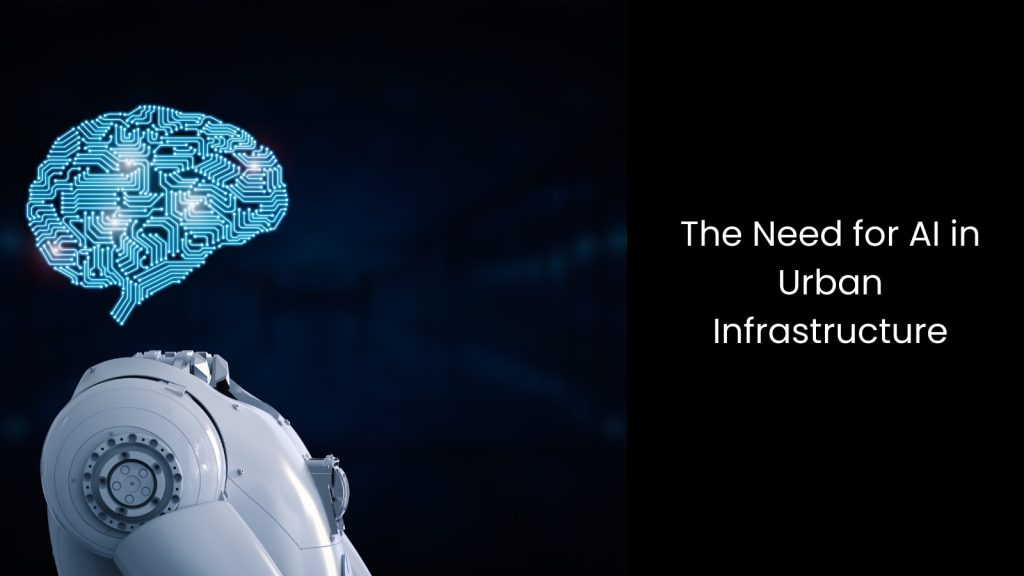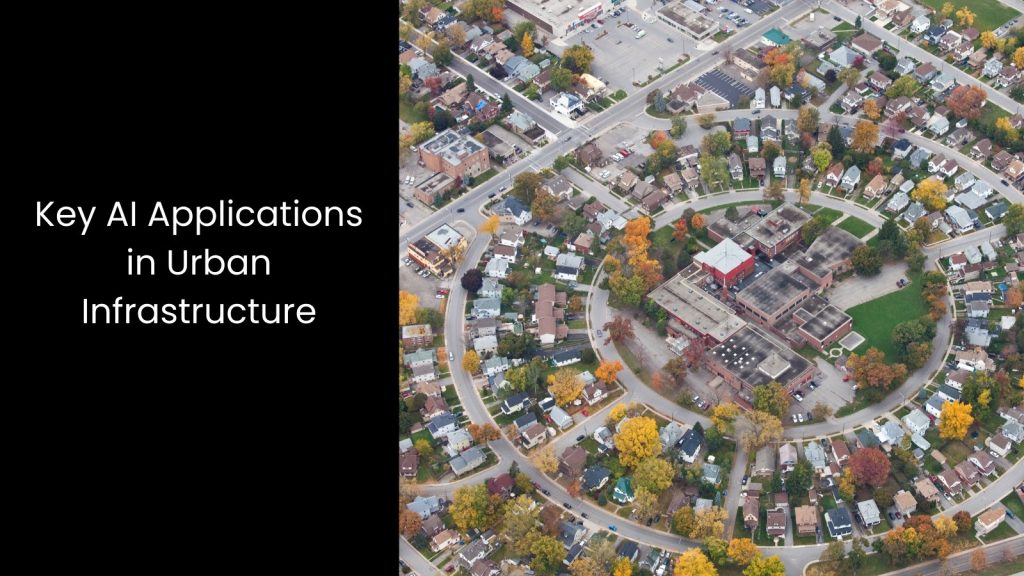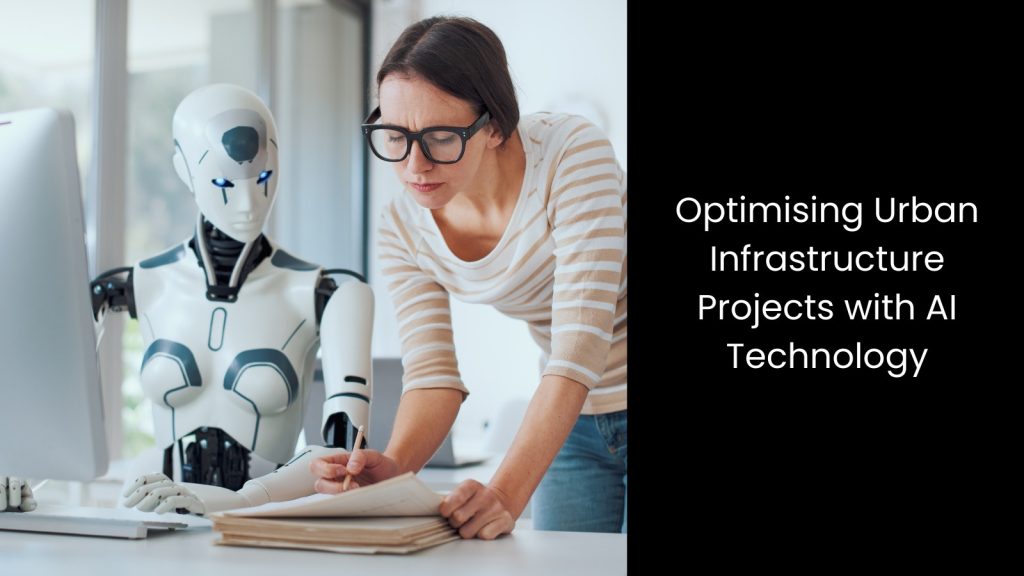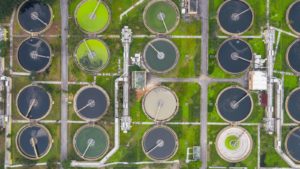Ever wondered if your city could be as smart? With AI, it is not as far-fetched as it seems. Around the globe, many cities are diving headfirst into the future, where traffic lights, waste management, and even water systems operate on their own intelligence. As urbanisation accelerates, AI is becoming a sharp arrow governments can release towards how they design, manage, and maintain infrastructure. From reducing traffic jams to predicting energy needs, AI is making cities smarter, more sustainable, and more efficient. But how exactly does AI work in urban infrastructure, and what does this mean for everyday life in Australia?
In this article, we explore the innovative ways AI is revolutionising urban infrastructure in today’s time.
In this article, we explore the innovative ways AI is revolutionising urban infrastructure in today’s time.
The Need for AI in Urban Infrastructure

- With the rise of AI as an innovative tool, urban infrastructure is evolving to tackle modern challenges like population growth, traffic congestion, resource management, and environmental concerns.
- Every day, we witness cities expanding fast, and this pushes existing systems to their limits. More people mean heavier traffic, strained utilities, and increased pollution, and this makes urban living more complicated.
- When the cities and authorities have traditional infrastructure management in place, they struggle to keep up because it relies on outdated processes, manual monitoring, and reactive solutions. Traffic lights work on fixed timers instead of real-time data, public transport schedules lack flexibility, and energy grids waste power due to inefficient distribution.
- However, this is where AI changes the game by improving decision-making, automating routine tasks, and boosting sustainability. These intelligent systems do not just react; they predict, adapt, and optimise.
- As urban areas grow, relying on AI is not just about efficiency; it is about making infrastructure smarter, greener, and more responsive to real-world needs.
Key AI Applications in Urban Infrastructure

Smart Traffic Management
One of the most practical ways AI improves urban infrastructure is through smart traffic management, as it makes roads less congested and travel more efficient.
The problem with traditional traffic control was that it depended on fixed signal timings, which can cause unnecessary delays and bottlenecks. However, when it comes to AI-driven traffic systems, they work differently, using predictive analytics and real-time monitoring to adjust signals based on actual road conditions.
Sensors, cameras, and GPS data constantly track vehicle movement while identifying patterns and predicting traffic build-ups before they happen. AI analyses this data and adjusts traffic light sequences, giving more green time to busy roads while easing pressure on less crowded areas. Smart algorithms also guide drivers through optimised routes, prevent gridlocks, and reduce travel time.
Further, AI-powered systems communicate with connected vehicles, warning them about upcoming congestion or suggesting alternate paths. Emergency vehicles move faster as AI clears their way by adjusting signals instantly. Road conditions, accidents, and sudden slowdowns trigger immediate responses, ensuring smooth traffic flow.
So, yes, as urban areas grow, smart traffic management powered by AI becomes the key to building efficient, responsive, and sustainable road networks.
The problem with traditional traffic control was that it depended on fixed signal timings, which can cause unnecessary delays and bottlenecks. However, when it comes to AI-driven traffic systems, they work differently, using predictive analytics and real-time monitoring to adjust signals based on actual road conditions.
Sensors, cameras, and GPS data constantly track vehicle movement while identifying patterns and predicting traffic build-ups before they happen. AI analyses this data and adjusts traffic light sequences, giving more green time to busy roads while easing pressure on less crowded areas. Smart algorithms also guide drivers through optimised routes, prevent gridlocks, and reduce travel time.
Further, AI-powered systems communicate with connected vehicles, warning them about upcoming congestion or suggesting alternate paths. Emergency vehicles move faster as AI clears their way by adjusting signals instantly. Road conditions, accidents, and sudden slowdowns trigger immediate responses, ensuring smooth traffic flow.
So, yes, as urban areas grow, smart traffic management powered by AI becomes the key to building efficient, responsive, and sustainable road networks.
AI in Public Transport Optimisation
Another place where AI powers urban infrastructure is public transport optimisation. This improves the efficiency and reliability of buses, trains, and ride-sharing services.
Let us explain how this functions.
AI uses predictive maintenance to anticipate when vehicles will need repairs before they break down. Sensors on buses and trains collect real-time data about engine performance, tire wear, and fuel efficiency, which AI analyses to predict potential issues. This helps transport agencies schedule maintenance more effectively, reducing unexpected breakdowns and delays.
Moreover, AI also optimises public transport routes, ensuring buses and trains follow the most efficient paths based on real-time traffic data. Did you know that in cities like London, AI uses live data to adjust bus routes, ensuring they avoid areas with heavy traffic or road closures? In Singapore, AI is used to manage the MRT system, adjusting train schedules to match the number of passengers during peak hours and preventing overcrowding.
This way, these AI applications create a smoother, more reliable travel experience all around the world.
Let us explain how this functions.
AI uses predictive maintenance to anticipate when vehicles will need repairs before they break down. Sensors on buses and trains collect real-time data about engine performance, tire wear, and fuel efficiency, which AI analyses to predict potential issues. This helps transport agencies schedule maintenance more effectively, reducing unexpected breakdowns and delays.
Moreover, AI also optimises public transport routes, ensuring buses and trains follow the most efficient paths based on real-time traffic data. Did you know that in cities like London, AI uses live data to adjust bus routes, ensuring they avoid areas with heavy traffic or road closures? In Singapore, AI is used to manage the MRT system, adjusting train schedules to match the number of passengers during peak hours and preventing overcrowding.
This way, these AI applications create a smoother, more reliable travel experience all around the world.
AI for Energy Efficiency and Smart Grids
This is one context where AI makes a giant impact on urban infrastructure.
AI helps manage energy use more effectively, predicting demand and adjusting supply to match it. On the other hand, smart grids powered by AI constantly monitor energy consumption in real time. These systems collect data from homes, businesses, and utilities, which AI analyses to forecast future energy needs. This allows energy providers to distribute power where it is most needed, reducing waste and improving efficiency.
AI can even predict when certain areas might experience a spike in demand, like during a heatwave, and adjust power generation or storage in advance. Moreover, AI-driven optimisation helps reduce carbon footprints. Smart grids use AI to integrate renewable energy sources, such as solar and wind, into the power grid.
Apart from that, AI analyses weather patterns and energy production levels to ensure a smooth balance between traditional and renewable sources. It has been a while since cities like Amsterdam and San Francisco have used AI to monitor and manage energy consumption. The latter helps reduce overall energy use and cut emissions.
AI helps manage energy use more effectively, predicting demand and adjusting supply to match it. On the other hand, smart grids powered by AI constantly monitor energy consumption in real time. These systems collect data from homes, businesses, and utilities, which AI analyses to forecast future energy needs. This allows energy providers to distribute power where it is most needed, reducing waste and improving efficiency.
AI can even predict when certain areas might experience a spike in demand, like during a heatwave, and adjust power generation or storage in advance. Moreover, AI-driven optimisation helps reduce carbon footprints. Smart grids use AI to integrate renewable energy sources, such as solar and wind, into the power grid.
Apart from that, AI analyses weather patterns and energy production levels to ensure a smooth balance between traditional and renewable sources. It has been a while since cities like Amsterdam and San Francisco have used AI to monitor and manage energy consumption. The latter helps reduce overall energy use and cut emissions.
AI in Waste Management and Sustainability
How can AI help cities manage waste better and become more sustainable?
AI improves waste management in urban infrastructure by using smart waste collection systems, automated sorting, and recycling. AI-driven sensors in trash bins monitor waste levels in real time, allowing collection trucks to follow optimised routes. This reduces fuel consumption and ensures that trucks only go to full bins, saving time and energy.
In places like Barcelona, AI systems track waste in public areas and adjust collection schedules based on the amount of waste generated.
AI also plays a major role in recycling automation. Robots powered by AI can sort recyclables from general waste, using machine learning to identify and separate materials like plastic, glass, and paper.
This surely speeds up the sorting process and ensures that more waste is recycled properly.
AI improves waste management in urban infrastructure by using smart waste collection systems, automated sorting, and recycling. AI-driven sensors in trash bins monitor waste levels in real time, allowing collection trucks to follow optimised routes. This reduces fuel consumption and ensures that trucks only go to full bins, saving time and energy.
In places like Barcelona, AI systems track waste in public areas and adjust collection schedules based on the amount of waste generated.
AI also plays a major role in recycling automation. Robots powered by AI can sort recyclables from general waste, using machine learning to identify and separate materials like plastic, glass, and paper.
This surely speeds up the sorting process and ensures that more waste is recycled properly.
AI for Water Management
This has been a trend since AI started transforming urban infrastructure.
Water management is now more efficient with the help of smart sensors and AI-powered systems. In cities, managing water supply and waste requires constant monitoring to ensure that resources are distributed efficiently. Smart sensors installed in water pipes and storage systems detect leaks, pressure drops, or any irregularities, instantly alerting authorities. This prevents major water loss, saves money, and ensures consistent water delivery.
AI also predicts water demand by analysing data from weather patterns, population growth, and past usage trends. Cities can adjust water distribution in real time, ensuring no area faces shortages while avoiding waste.
When it comes to waste management, AI improves efficiency with smart collection systems. Sensors in trash bins collect data on waste levels, and AI uses this information to plan optimal routes for garbage trucks, reducing fuel use and unnecessary trips. Moreover, AI-powered sorting systems help separate recyclable materials from general waste. These automated systems can identify and sort plastics, paper, and metals faster and more accurately than humans, ensuring higher recycling rates and less contamination.
These advancements in AI not only save resources but also improve the efficiency of urban infrastructure as a whole.
Water management is now more efficient with the help of smart sensors and AI-powered systems. In cities, managing water supply and waste requires constant monitoring to ensure that resources are distributed efficiently. Smart sensors installed in water pipes and storage systems detect leaks, pressure drops, or any irregularities, instantly alerting authorities. This prevents major water loss, saves money, and ensures consistent water delivery.
AI also predicts water demand by analysing data from weather patterns, population growth, and past usage trends. Cities can adjust water distribution in real time, ensuring no area faces shortages while avoiding waste.
When it comes to waste management, AI improves efficiency with smart collection systems. Sensors in trash bins collect data on waste levels, and AI uses this information to plan optimal routes for garbage trucks, reducing fuel use and unnecessary trips. Moreover, AI-powered sorting systems help separate recyclable materials from general waste. These automated systems can identify and sort plastics, paper, and metals faster and more accurately than humans, ensuring higher recycling rates and less contamination.
These advancements in AI not only save resources but also improve the efficiency of urban infrastructure as a whole.
Optimising Urban Infrastructure Projects with AI Technology

There is no doubt that AI is reshaping urban infrastructure, making projects more efficient, sustainable, and responsive to the needs of growing cities. As technology continues to evolve, adopting AI-driven solutions in urban planning through an industry expert will be key to creating smarter, greener cities that can adapt to challenges and thrive in an increasingly complex world.







